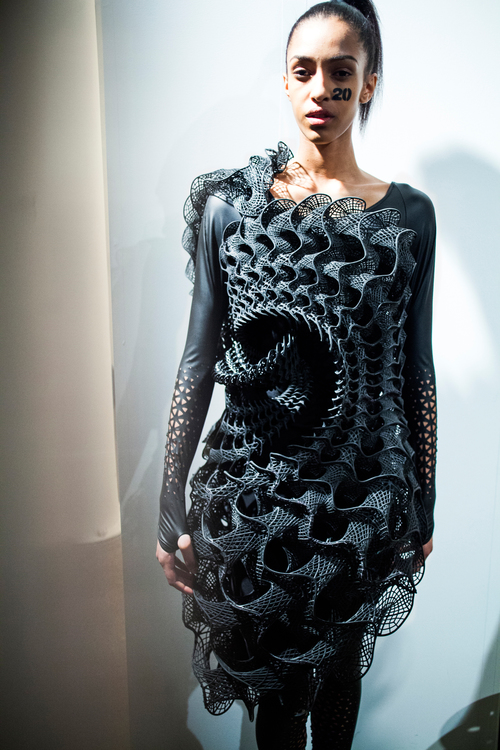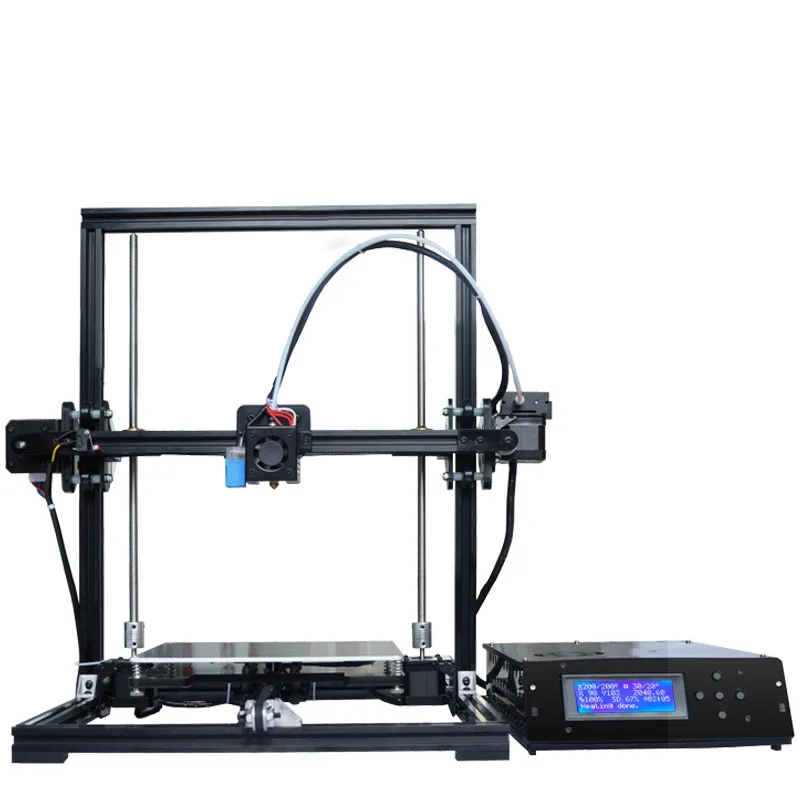3D printing for professionals
The ROI of 3D printing
Using a 3D printer at workFinding the right 3D printer for my colleaguesMaking sure 3D printing is a smart investmentTeaching others using 3D printing 3D printing as part of my studies3D printing for personal projects
AerospaceArchitectureAutomotiveConsumer ProductsManufacturing/IndustrialGovernment/DefenseHealthcareEducationServicesOther
Go back
United StatesNetherlandsBelgiumGermanyFranceUnited KingdomAland IslandsAfghanistanAlbaniaAlgeriaAmerican SamoaAndorraAngolaAnguillaAntarcticaAntigua and BarbudaArgentinaArmeniaArubaAustraliaAustriaAzerbaijanBahamasBahrainBangladeshBarbadosBelarusBelgiumBelizeBeninBermudaBhutanBoliviaBosnia and HerzegovinaBotswanaBouvet IslandBrazilBrit/Indian Ocean Terr.Brunei DarussalamBulgariaBurkina FasoBurundiC̫te d'IvoireCambodiaCameroonCanadaCape VerdeCayman IslandsCentral African RepublicChadChileChinaChristmas IslandCocos (Keeling) IslandsColombiaComorosCongoCongo, The Dem. Republic OfCook IslandsCosta RicaCroatiaCubaCyprusCzech RepublicDenmarkDjiboutiDominicaDominican RepublicEcuadorEgyptEl SalvadorEquatorial GuineaEritreaEstoniaEthiopiaFalkland IslandsFaroe IslandsFijiFinlandFranceFrench GuianaFrench PolynesiaFrench Southern Terr.GabonGambiaGeorgiaGermanyGhanaGibraltarGreeceGreenlandGrenadaGuadeloupeGuamGuatemalaGuineaGuinea-BissauGuyanaHaitiHeard/McDonald Isls.HondurasHong KongHungaryIcelandIndiaIndonesiaIranIraqIrelandIsraelItalyJamaicaJapanJordanKazakhstanKenyaKiribatiKorea (North)Korea (South)KuwaitKyrgyzstanLaosLatviaLebanonLesothoLiberiaLibyaLiechtensteinLithuaniaLuxembourgMacauMacedoniaMadagascarMalawiMalaysiaMaldivesMaliMaltaMarshall IslandsMartiniqueMauritaniaMauritiusMayotteMexicoMicronesiaMoldovaMonacoMongoliaMontserratMoroccoMozambiqueMyanmarN. Mariana Isls.NamibiaNauruNepalNetherlandsNetherlands AntillesNew CaledoniaNew ZealandNicaraguaNigerNigeriaNiueNorfolk IslandNorwayOmanPakistanPalauPalestinian Territory, OccupiedPanamaPapua New GuineaParaguayPeruPhilippinesPitcairnPolandPortugalPuerto RicoQatarReunionRomaniaRussian FederationRwandaSaint Kitts and NevisSaint LuciaSamoaSan MarinoSao Tome/PrincipeSaudi ArabiaSenegalSerbia and MontenegroSeychellesSierra LeoneSingaporeSlovak RepublicSloveniaSolomon IslandsSomaliaSouth AfricaSpainSri LankaSt.
 HelenaSt. Pierre and MiquelonSt. Vincent and GrenadinesSudanSurinameSvalbard/Jan Mayen Isls.SwazilandSwedenSwitzerlandSyriaTaiwanTajikistanTanzaniaThailandTimor-LesteTogoTokelauTongaTrinidad and TobagoTunisiaTurkeyTurkmenistanTurks/Caicos Isls.TuvaluUgandaUkraineUnited Arab EmiratesUnited KingdomUnited StatesUruguayUS Minor Outlying Is.UzbekistanVanuatuVatican CityVenezuelaViet NamVirgin Islands (British)Virgin Islands (U.S.)Wallis/Futuna Isls.Western SaharaYemenZambiaZimbabwe
HelenaSt. Pierre and MiquelonSt. Vincent and GrenadinesSudanSurinameSvalbard/Jan Mayen Isls.SwazilandSwedenSwitzerlandSyriaTaiwanTajikistanTanzaniaThailandTimor-LesteTogoTokelauTongaTrinidad and TobagoTunisiaTurkeyTurkmenistanTurks/Caicos Isls.TuvaluUgandaUkraineUnited Arab EmiratesUnited KingdomUnited StatesUruguayUS Minor Outlying Is.UzbekistanVanuatuVatican CityVenezuelaViet NamVirgin Islands (British)Virgin Islands (U.S.)Wallis/Futuna Isls.Western SaharaYemenZambiaZimbabwe
AlaskaAlabamaArkansasAmerican SamoaArizonaCaliforniaColoradoConnecticutD.C.DelawareFloridaMicronesiaGeorgiaGuamHawaiiIowaIdahoIllinoisIndianaKansasKentuckyLouisianaMassachusettsMarylandMaineMarshall IslandsMichiganMinnesotaMissouriMarianasMississippiMontanaNorth CarolinaNorth DakotaNebraskaNew HampshireNew JerseyNew MexicoNevadaNew YorkOhioOklahomaOregonPennsylvaniaPuerto RicoPalauRhode IslandSouth CarolinaSouth DakotaTennesseeTexasUtahVirginiaVirgin IslandsVermontWashingtonWisconsinWest VirginiaWyoming
AlbertaManitobaBritish ColumbiaNew BrunswickNewfoundland and LabradorNova ScotiaNorthwest TerritoriesNunavutOntarioPrince Edward IslandQuebecSaskatchewanYukon Territory
AguascalientesBaja CaliforniaBaja California SurCampecheChiapasChihuahuaCoahuilaColimaCiudad de MexicoDurangoGuanajuatoGuerreroHidalgoJaliscoEstado de MexicoMichoacánMorelosNayaritNuevo LeónOaxacaPueblaQuerétaroQuintana RooSan Luis PotosíSinaloaSonoraTabascoTamaulipasTlaxcalaVeracruzYucatánZacatecas
I agree to receive relevant and useful emails from Ultimaker based on my preferences.
Ultimaker processes your personal data in accordance with the Privacy and Cookie Policy.
Go back
mix of features, performance, and price
What is the best professional desktop 3D printer?
There are so many different 3D printers on the market today that it can be a real challenge to choose one. When every penny of your quarterly budget counts, you want to make sure your professional 3D printer is adapted to your needs. Material compatibility, build size, ease of use, workflow, software, and many more elements come into play.
To help you cut through the clutter, we made a shortlist of some of the best professional 3D printers available this year. These benchtop and desktop FFF (fused filament fabrication) 3D printers for professionals offer a great combination of features, performance, and reliability, and come from well-established brands. They are ideal tools for rapid prototyping and iterative design processes, and are also suitable for low-volume production series. Keep in mind, though, that while part quality does depend on your printer’s performance, it also greatly relies on your choice of materials.
They are ideal tools for rapid prototyping and iterative design processes, and are also suitable for low-volume production series. Keep in mind, though, that while part quality does depend on your printer’s performance, it also greatly relies on your choice of materials.
Towards the end of this article, we also provide a brief buying guide where you can learn more about different 3D printer specifications such as printing temperatures, layer thickness, dual extrusion, and more.
Best benchtop 3D printers for professionals in 2022: our selection
The table below recaps our selection of some of the best professional 3D printing options for office use. Our goal is to provide a quick, visual overview of the market; there are of course numerous other factors to take into account (material compatibility, certifications, customer service, software, etc.) before making the right choice.
| Brand | Product | Build size | Country | Price Approximate starting prices based on supplier-provided information and public data. | |
|---|---|---|---|---|---|
| Prusa Research | Original Prusa i3 MK3S This product has been reviewed by our team. | 250 × 210 × 210 mm9.84 × 8.27 × 8.27 in | Czech Republic | $ 9991 015 €886 £148,907 ¥ | Buy |
| BCN3D Technologies | Sigma D25 | 420 × 300 × 200 mm16.54 × 11.81 × 7.87 in | Spain | $ 3,9953 495 €3,544 £595,479 ¥ | Quote |
| Ultimaker | Ultimaker S5 | 330 × 240 × 300 mm12.99 × 9.45 × 11.81 in | Netherlands | $ 5,9955 495 €5,318 £893,591 ¥ | Quote |
| MakerBot | Method X | 190 × 190 × 196 mm7.48 × 7.48 × 7.72 in | United States | $ 6,4996 606 €5,765 £968,715 ¥ | Quote |
| Raise3D This brand is a certified partner from our network. | Pro3 Plus This product has been reviewed by our team. | 300 × 300 × 605 mm11.81 × 11.81 × 23.82 in | United States | $ 7,2496 249 €6,430 £1,080,507 ¥ | Quote |
| Markforged | Onyx Pro | 320 × 132 × 154 mm12.6 × 5.2 × 6.06 in | United States | $ 9,60010 000 €8,516 £1,430,938 ¥ | Quote |
| Stratasys | F120 | 254 × 254 × 254 mm10 × 10 × 10 in | United States | $ 12,00011 000 €10,644 £1,788,672 ¥ | Quote |
Expand to see more specs
The products in the table are ranked by price (low to high).
| Brand | Product | Build size | Build volume | Extruder temp. | Country | Price Approximate starting prices based on supplier-provided information and public data. Prices may vary by region, over time and do not include additional products or services (taxes, shipping, accessories, training, installation, …). | |
|---|---|---|---|---|---|---|---|
| Prusa Research | Original Prusa i3 MK3S This product has been reviewed by our team. | 250 × 210 × 210 mm9.84 × 8.27 × 8.27 in | 11.03 L | 300°C | Czech Republic | $ 9991 015 €886 £148,907 ¥ | Buy on Prusa |
| BCN3D Technologies | Sigma D25 | 420 × 300 × 200 mm16.54 × 11.81 × 7.87 in | 25.2 L | 300°C | Spain | $ 3,9953 495 €3,544 £595,479 ¥ | Get a quote |
| Ultimaker | Ultimaker S5 | 330 × 240 × 300 mm12.99 × 9.45 × 11.81 in | 23.76 L | 280°C | Netherlands | $ 5,9955 495 €5,318 £893,591 ¥ | Get a quote |
| MakerBot | Method X | 190 × 190 × 196 mm7.48 × 7.48 × 7.72 in | 7.08 L | 260°C | United States | $ 6,4996 606 €5,765 £968,715 ¥ | Get a quote |
| Raise3D This brand is a certified partner from our network. | Pro3 Plus This product has been reviewed by our team. | 300 × 300 × 605 mm11.81 × 11.81 × 23.82 in | 54.45 L | 300°C | United States | $ 7,2496 249 €6,430 £1,080,507 ¥ | Get a quote |
| Markforged | Onyx Pro | 320 × 132 × 154 mm12.6 × 5.2 × 6.06 in | 6.5 L | – | United States | $ 9,60010 000 €8,516 £1,430,938 ¥ | Get a quote |
| Stratasys | F120 | 254 × 254 × 254 mm10 × 10 × 10 in | 16.39 L | – | United States | $ 12,00011 000 €10,644 £1,788,672 ¥ | Get a quote |
Overview of the best professional 3D printers in 2022
In this section, we give some more context and information about each pro 3D printer from our selection.
The Prusa Research Original Prusa i3 MK3S+ is a desktop 3D printer manufactured by Prusa Research, based in the Czech Republic. Prusa Research is a well-known brand created by Josef Prusa, inventor of the open-source Prusa i3 3D printer design.
Prusa 3D printers are highly reliable machines and can produce excellent parts right out of the box. Priced just under $1,000, the MK3S+ offers a very good price-to-performance ratio. With its open chassis and customizable “everything”, it’s a great option for those that like to get manual. Professionals who are looking for easy and low-maintenance operation may want to look at options in a higher price range.
Full review: Original Prusa i3 MK3S review
Buy on Prusa Add to comparison
The BCN3D Sigma D25 is a large desktop 3D printer for office use made by BCN3D Technologies. BCN3D, or BCN3D Technologies, is based in Spain and is one of the desktop 3D printer market leaders. They produce high-quality 3D printers for professionals, the Sigma being their flagship series.
The Sigma D25 pro 3D printer offers a relatively big build volume and boasts BCN3D’s IDEX technology. This means that there are two separate print heads that can both move independently to either print two identical objects at the same time or print in mirror mode.
Contact manufacturer Get a quote Add to comparison
The Ultimaker S5 is a professional desktop 3D printer made by Ultimaker, a manufacturer based in the Netherlands. Users may control their S5 from a distance thanks to the Ultimaker App and a Wi-Fi connection. There is also an onboard camera to monitor 3D prints from a distance. Furthermore, to maximize production efficiency, it is possible to group multiple S5 3D printers together with Cura Connect.
Today, the Ultimaker S5 is often referred to as the best professional 3D printer, especially when equipped with the Pro Bundle. The Pro Bundle includes a “material station” where up to 6 spools of filament can be loaded and automatically managed (auto-switch, humidity control, etc.), and an “air manager” that closes up the build area and filters particles.
Contact manufacturer Get a quote Add to comparison
The Method X is a professional benchtop 3D printer produced by MakerBot (a Stratasys-owned brand). It was designed to 3D print ABS filament reliably and efficiently, thanks to a number of features– including a 100°C heated build chamber– than enable comprehensive environmental control.
It was designed to 3D print ABS filament reliably and efficiently, thanks to a number of features– including a 100°C heated build chamber– than enable comprehensive environmental control.
Makerbot’s Method X is equipped with a 5-inch touchscreen with real-time feedback and status on print jobs, and offers automatic calibration. This pro 3D printer also boasts “SmartAssist Material Loading”, for fast and easy filament changing. Users can log in to the manufacturer’s proprietary CloudPrint software to monitor prints remotely at any time.
Contact manufacturer Get a quote Add to comparison
The Markforged Onyx Pro is a professional desktop 3D printer made by Markforged, a manufacturer based in Somerville, Massachusetts (USA). With its dual printhead, the Onyx Pro reinforces plastic parts with a continuous strand of fiberglass.
The main available materials for the Onyx Pro are Onyx (a carbon fiber filled nylon) and Precise PLA. Markforged advertises parts up to ten times stronger than non-reinforced plastic ones.
The MarkForged Onyx Pro is delivered with Markforged’s browser-based Eiger software, powerful and easy to use. Eiger allows precise control over the 3D printing process.
Contact manufacturer Get a quote Add to comparison
The Raise3D Pro3 Plus is a professional, industrial-grade 3D printer made by Raise3D, an ISO9001:2015 and ISO14001-certified manufacturer based in the US (California). Raise3D also has offices in the Netherlands (Rotterdam) and in China (Shanghai).
This 3D printer for office environments is a true workhorse, capable of printing for hours without any hiccups. It does an impressive job with complex overhangs and features an intuitive, user-friendly workflow. The printer comes with an air filtration system, an onboard camera, and a dual extruder. Its control software is also available as a smartphone app for convenient remote monitoring.
Raise3D’s Pro3 series also includes the Pro3, featuring a smaller build volume. Both printers are a follow-up to the Pro2 Series.
Full review: Raise3D Pro3 Plus review
Contact manufacturer Get a quote Add to comparison
Stratasys is the Apple of the 3D printing industry. Their 3D printers, including the F120, are reliable machines with industrial-grade components and printing quality. However, Stratasys 3D printers generally only work with Stratasys materials and hardware. At the moment, less than a handful of filaments are available for the Stratasys F120.
The F120 is one of the most affordable FDM printers from Stratasys and is destined to be a desktop workhorse for professionals. Stratasys emphasizes on the printer’s ease of use, durability, and industrial quality.
Contact manufacturer Get a quote Add to comparison
Professional 3D printer buying guide
There are several features and specifications to take into account when choosing the best professional 3D printer for your needs.
Technology
For this professional desktop 3D printer selection, we focused on FFF (fused filament fabrication) 3D printers. They are ideal for creating both prototypes and end-use parts.
They are ideal for creating both prototypes and end-use parts.
For professionals in dental or jewelry industries where high precision and detail are required, resin 3D printers are more adapted, with SLA, DLP, or LCD-based technologies.
There are also desktop SLS 3D printers (powder 3D printers), PEEK 3D printers, continuous fiber 3D printers, and more for advanced applications. Explore these topics with all of our other 3D printer guides.
Build plate or print bed
A heated print bed is mandatory for users that need to 3D print with ABS and other more demanding materials. The heat helps prevent warping and offers better first-layer adhesion.
While today’s 3D printers almost always feature heated build plates, they don’t all reach the same temperatures. It is best to know which thermoplastics you will be printing and to choose your desktop 3D printer accordingly.
Some professional 3D printers have interchangeable build trays to help speed up the workflow, enabling users to quickly launch new prints while the previous build plate cools down.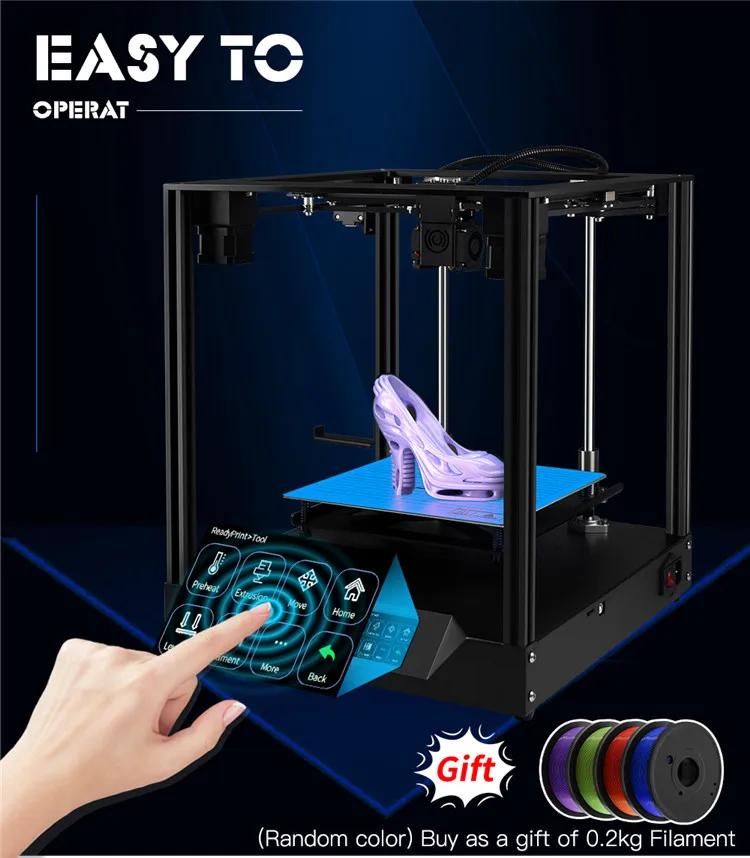 On higher-end 3D printers, there can even be vacuum systems for instant part release from the print bed.
On higher-end 3D printers, there can even be vacuum systems for instant part release from the print bed.
Print head
PLA and ABS can be considered the most common and basic 3D printing materials in general. Professionals, however, often need to print more complex materials, such as Nylon, Polycarbonate, PETG, ASA, or other engineering-grade polymers.
They don’t all have the same melting or glass transition temperature and therefore have to be 3D printed at different temperatures. For example, PLA can be extruded at around 200°C, PC at around 260°C, and some high-performance materials like PEEK or PEKK need the extruder to reach at least 450°C.
Popular professional filaments also include plastics filled with carbon fiber or glass fiber for increased strength and resistance. These materials are abrasive and require tough nozzles; many professional printers are already compatible with these composites, but it’s important to make sure beforehand.
Some 3D printers are compatible with multiple types of nozzles with varying diameters, and even paste-type print heads exist to 3D print clay.
Automatic calibration
Most professional 3D printer systems are equipped with automatic calibration features to make the process as plug-n-play as possible. It’s important to recalibrate a 3D printer from time to time to ensure consistent print quality.
There are two main types of calibration:
- Print bed leveling (making sure the print bed is perfectly parallel to the nozzle, and not tilted)
- Nozzle offset (determining the right gap between the nozzle and the print bed)
Most 3D printers for professionals feature a probe attached to the print head to automate these processes instead of users having to use a piece of paper or business card.
Some 3D printers also have NFC readers to automatically adjust their temperature settings according to the detected material (so long as the spool is chipped, too).
Dual extrusion and independent dual extrusion (IDEX)
A dual extruder enables users to 3D print with two different colors or materials simultaneously, including soluble support material for complex objects.
If there are two separate print heads, the system is referred to as IDEX (independent dual extruder). BCN3D Technologies was one of the first manufacturers to offer this feature a few years back.
In addition to being able to 3D print two materials at a time, independent dual extrusion offers different 3D printing possibilities:
- Duplication mode: 3D prints two identical objects at the same time.
- Mirror mode: to 3D print an object twice as fast as with just one extruder, each nozzle completes one-half of the object.
Onboard camera
Some 3D printers are equipped with an onboard camera that monitors prints remotely or saves time-lapse videos.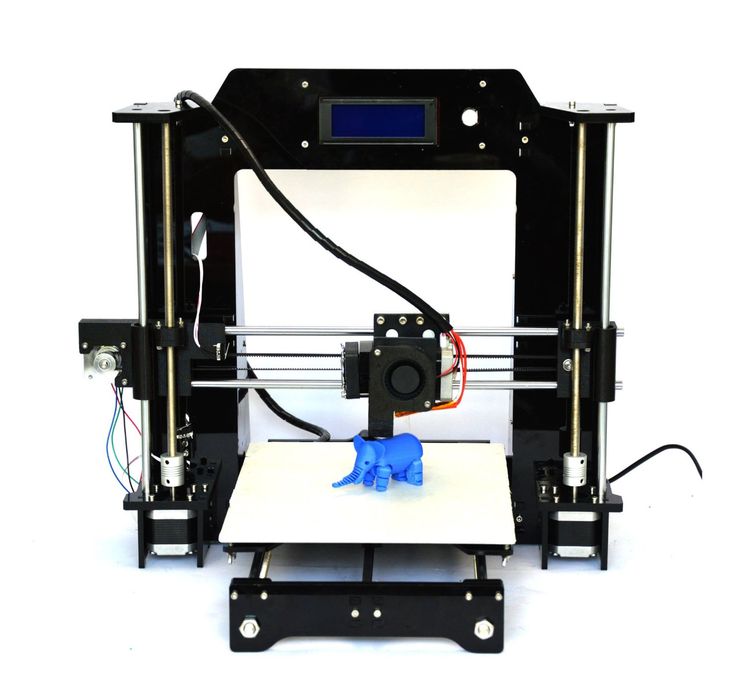 This feature can be useful if the printer must be left unattended for long periods of time. We found it to be quite practical when we launched a long print for our Pro3 Plus review.
This feature can be useful if the printer must be left unattended for long periods of time. We found it to be quite practical when we launched a long print for our Pro3 Plus review.
With the right 3D software, onboard cameras can help with quality control. Quality control can also be done during post-processing workflows with a metrology 3D scanner.
Minimum layer thickness
3D print quality is intricately linked to layer thickness, a.k.a. layer height or Z resolution. It’s the minimum height of each successive layer that forms the 3D printed object. The thinner the layers, the less they are distinguishable and the smoother the object will be (similar to the ratio of pixels in an image).
Thinner layers also mean that more layers are required to complete the object, which translates into more 3D print time. Layer thickness can be adjusted depending on if you need a quick print (thicker) or a high-resolution print (thinner).
The typical minimum layer thickness for mid-range FFF 3D printers is 100 microns or 0. 1 millimeters, but it can go down to 0.01 mm in some cases.
1 millimeters, but it can go down to 0.01 mm in some cases.
Build volume
The build volume is the maximum size that your prints can be. If you need a bigger volume than what the 3D printers in this guide provide, you may be interested in these selections:
- L: Large volume 3D printers
- XL: Large format 3D printers
- XXL: Large scale 3D printers
Now, there are even large-sized resin 3D printers for those that need both volume and finer surface quality.
Closed frame
Many variables can interfere with 3D print quality, such as temperature changes and room drafts. Hence, 3D printers with an enclosed build chamber tend to provide better quality prints, in addition to reducing noise, odors, and– with a HEPA filter– harmful particle emissions.
A closed frame is almost mandatory when 3D printing with basically anything other than PLA. Today it is quite rare to see a professional 3D printer without an enclosure.
Today it is quite rare to see a professional 3D printer without an enclosure.
FAQ
Are 3D printers safe?
With basic precaution, 3D printers are relatively safe to use, although there has been some concern over harmful particle emissions from the melted filament. It’s best to use closed 3D printers with filters and to use 3D printers in well-ventilated areas. Users should also be careful not to burn themselves on a hot build plate or extruder; some 3D printers feature door safety sensors to lock the printer while it is printing.
Can 3D printers print metal? What 3D printers can print metal?
Yes, some FFF 3D printers are able to print metal-filled filaments. This is called metal FFF. Once the part has been 3D printed, however, it must undergo two processes called debinding and sintering. Other types of 3D printers (much more expensive and industrial-grade) are able to 3D print metal powder using various metal 3D printing technologies like L-PBF (laser powder bed fusion) or metal binder jetting, among others.
What is the best 3D printer for jewelry?
For jewelry, resin 3D printers are more adapted than FFF 3D printers. They use SLA, DLP, or LCD-based technologies to produce objects with fine details and smooth surfaces.
Can 3D printers print in color?
Yes, some 3D printers can print in color. They are called full-color 3D printers and often use powder-based technologies. Systems that mix CMYK filaments exist, but cannot reproduce photorealistic colors like powder-based 3D printers.
F2 Quart industrial 3D printer
FGF or FFF/FDM
Choose which printer you need:
for detailed filament or fast granule printing
Camera
Own electronics and intuitive development interface of the company
Professional complex for high-temperature 3D printing, own production and development of F2 innovations.
| Order now |
| Get detailed characteristics |
with a printing area to 615*615*600mm and the temperature of the cell up to 160 ° C you will no longer have to think about whether you can print it out what they thought.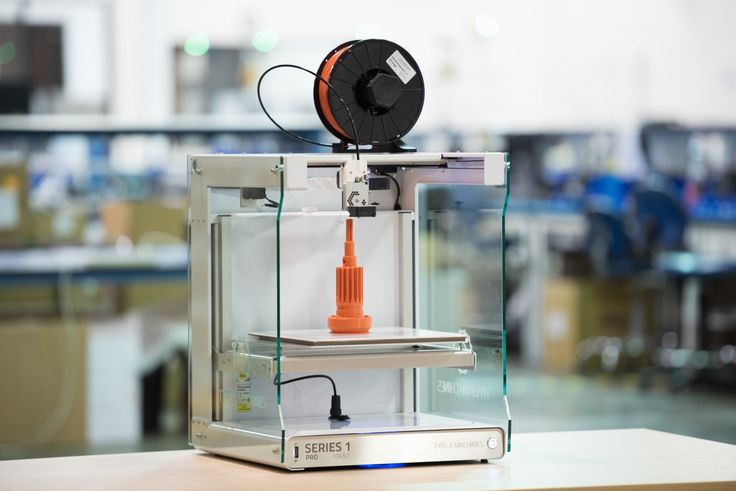
You can.
F2 Quart
New Improved High Temp
New for 2022, the Quart Printing System allows you to print with almost no limits on pellets or filament, this printer takes all the best from Lite and Pro, see for yourself.
F2 Quart printer is a professional
complex for high temperature 3D FDM or FGF printing.
F2 Quart
New Improved High Temp
New for 2022, the Quart printing complex allows you to print with granules or filament with almost no limits, this printer takes all the best from Lite and Pro, see for yourself.
F2 Quart printer is a professional
complex for high temperature 3D FDM or FGF printing.
In the FDM/FFF version:
extruder (up to 550°C) allows you to print not only standard polymers (ABS, PLA, PP, etc.), engineering polymers (ASA, PC, ABS + CF and etc. ),
),
but also high temperature polymers such as PEEK, PEKK, Ultem, PEEK+CF, PSU, PPS, etc.
In the FGF version:
uniform heating of the material, high quality of mixing, and optimal parameters for laying out the material, which affects the final quality of the resulting product.
F2 Printing Technology
We developed FDM/FFF 3D printing technology to open up new possibilities for additive technologies in any industry, making 3D printing with any materials fast and high quality for every manufacturer.
| Read more |
F2 Printing Technology
We developed FDM/FFF 3D printing technology to open up new possibilities for additive technologies in any industry, making 3D printing with any materials fast and high quality for each manufacturer.
| more |
FGF - 1 / 1. 5 / 5 /8 mm
5 / 5 /8 mm
FFF - 0.6 / 0.8 / 1 mm
Press Camera
Heating up to 160 ° C with convection of
Press area
to 600*600*600 mm
Platform
Quick -generated heated to 160 ° C Plant Plant
User Interface 9000
own electronics and intuitive interface
extruders
FGF - Granular (up to 500 ° C)
FFF - two independent high -temperature
(up to 550 ° C)
User Interface
Own electronics and intuitively understandable interface 9000 for work for operation minimal training is required with the printer, by looking at the interface you will immediately understand how to operate it.
Print chamber
160°C heated chamber
with convection
Forced convection of the chamber and uniform heating allows printing large parts with high interlayer adhesion.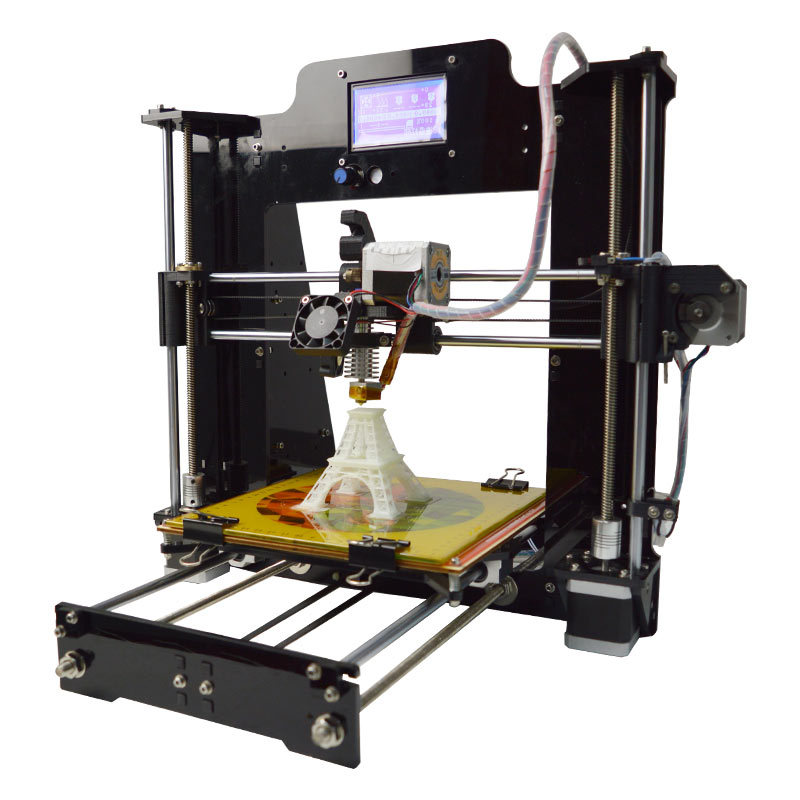
Parts do not delaminate or deform.
Print chamber
160°C heated chamber
with convection
Forced convection of the chamber and uniform heating allows printing large parts with high interlayer adhesion.
Parts will not delaminate or deform.
Extruders in FDM/FFF version
Two independent high temperature extruders allow you to print the entire range of available materials
F2 printing technology provides ultra-fast extruder heating to operating temperature in 3 seconds. with high precision melt support
Extruder in FGF version
Pellet extruder
Three-zone pellet heating technology inside the extruder ensures uniform material supply and high quality of the resulting product.
Extruder in FGF version
Pellet extruder
Three-zone pellet heating technology inside the extruder ensures uniform material flow and high quality of the resulting product.
Print platform
Quick change print platform
heated to 160°C
Quick release print platform makes printing quick and easy.
This avoids damage to larger models and allows the printer to be used almost without interruption between print runs.
Print Platform
Quick Change Print Platform
heated to 160°C
Quick Release Print Platform makes printing quick and easy.
This avoids damage to larger models and allows the printer to be used almost without interruption between print runs.
By clicking on the button, you consent to the processing of personal data and agree to the privacy policy
We design our printers with care and love - from sketch to finished product,
so that you can be confident in every layer of printing on F2 printers.
We design our printers with care and love - from sketch to finished product,
to give you confidence in every layer on F2 printers.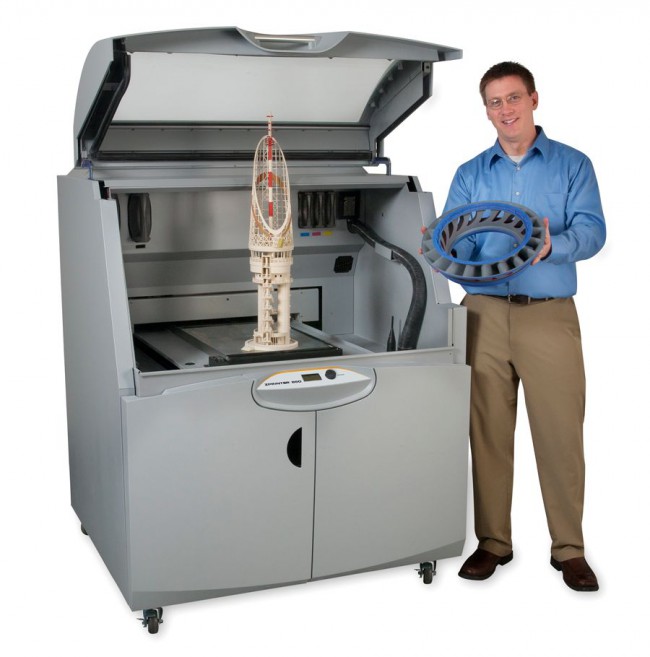
Pre-order
What is 3D printing and how it works. Fundamentals of 3D printing. Types of printing. 3D Skill
From the name it is already clear that 3D printing is the creation of full-fledged volumetric parts.
But how is it done?
There are many 3D printing technologies, but one of them is the most widespread.
FDM (Layered deposition technology) .
The essence of this technology is that the plastic is heated and extruded layer by layer. Just like when you are going to brush your teeth, you squeeze toothpaste out of a tube.
Why is this method most widely used?
Because of cheapness and simplicity.
There are many other ways to 3D print, the main ones are:
- SLA . The photopolymer solidifies layer by layer under the action of a laser in a bath of liquid photopolymer.
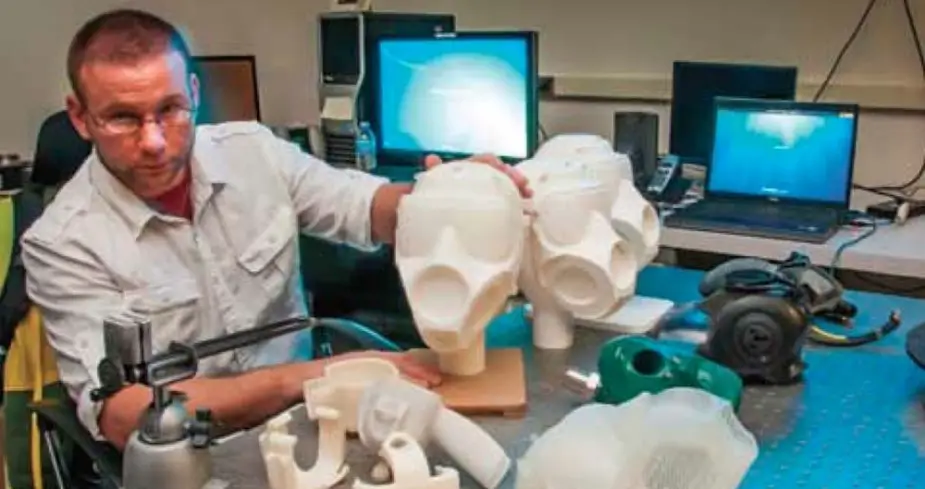 If you have ever put light fillings on your teeth, then remember how they shined on the filling to harden it. Yes, yes, dentists also used a photopolymer for fillings and then polymerized (hardened) it with a light lamp.
If you have ever put light fillings on your teeth, then remember how they shined on the filling to harden it. Yes, yes, dentists also used a photopolymer for fillings and then polymerized (hardened) it with a light lamp. - SLS . Laser sintering. Plastic in the form of a powder is melted by a laser and thus soldered together.
- Plaster print . Gypsum in the form of a powder is glued together with glue, and at the same time a pattern can be applied to the resulting surface.
Have you noticed something in common in all these 3D printing methods?
All of the above is created automatically by a computer without human intervention and manual labor.
But there is one more subtlety. The model is created, grown, and not cut by cutting off the excess, as in the CNC machine .
It turns out there is still an area close to 3D printing - CNC .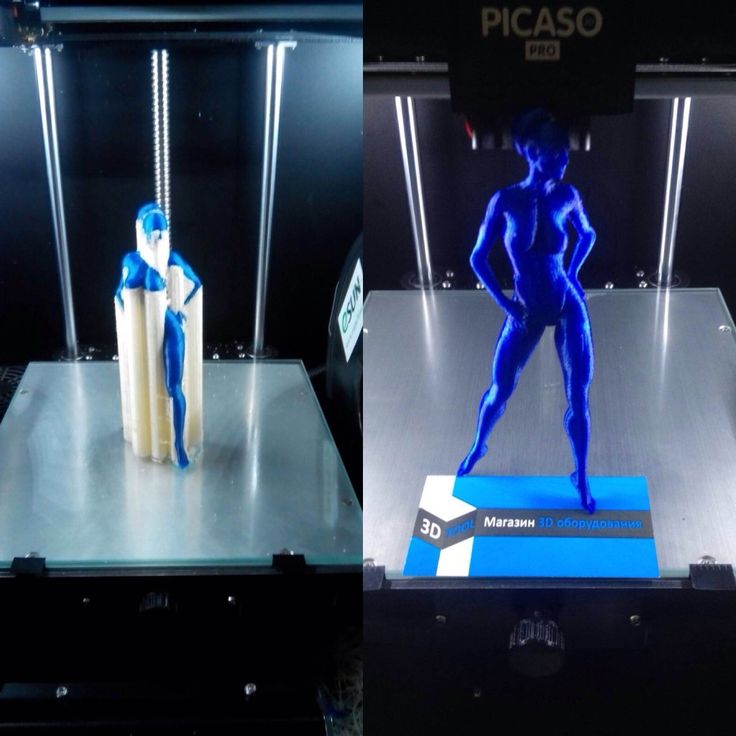
CNC machine (computer numerical control) is essentially a 3D printer, but instead of creating a part, the machine cuts off everything unnecessary from the workpiece with a cutter.
But all the basics and principle in 3D printing came from CNC as an earlier technology.
For example G-code .
What is model ?
This is a file with the coordinates of the model's vertices, connecting which create the surface of the model, its volume. But the 3D printer does not understand such a representation structure.
Therefore, the model is translated into a code understandable by the printer, in the so-called G-code . G-code is just a sequence of commands to the printer. The program that translates the model into G-code is called slicer .
That is, you do not need to be a 3D printing specialist and know the G-code, the slicer will translate the model into the G-code itself.
Usually a slicer is supplied with the printer or you can use a free and universal slicer such as Cura .
Why didn't 3D printing become mainstream if it's so easy and why don't famous manufacturers like Samsung make 3D printers?
It's just that the field of 3D printing is at the very beginning of development and there are many "pitfalls".
That's why there are some very funny life hacks in 3D printing. For example, tea with sugar, beer or an adhesive stick are used to fix the part on the table. And castor oil is used to lubricate the nozzle.
In general, if you want to do 3D printing, you need to start with FDM printing. Why?
FDM printers cost from 15 thousand rubles , and plastic - from 1 thousand rubles per kilogram .
Another advantage of such printing is that the principle of printing is quite simple and easy to learn.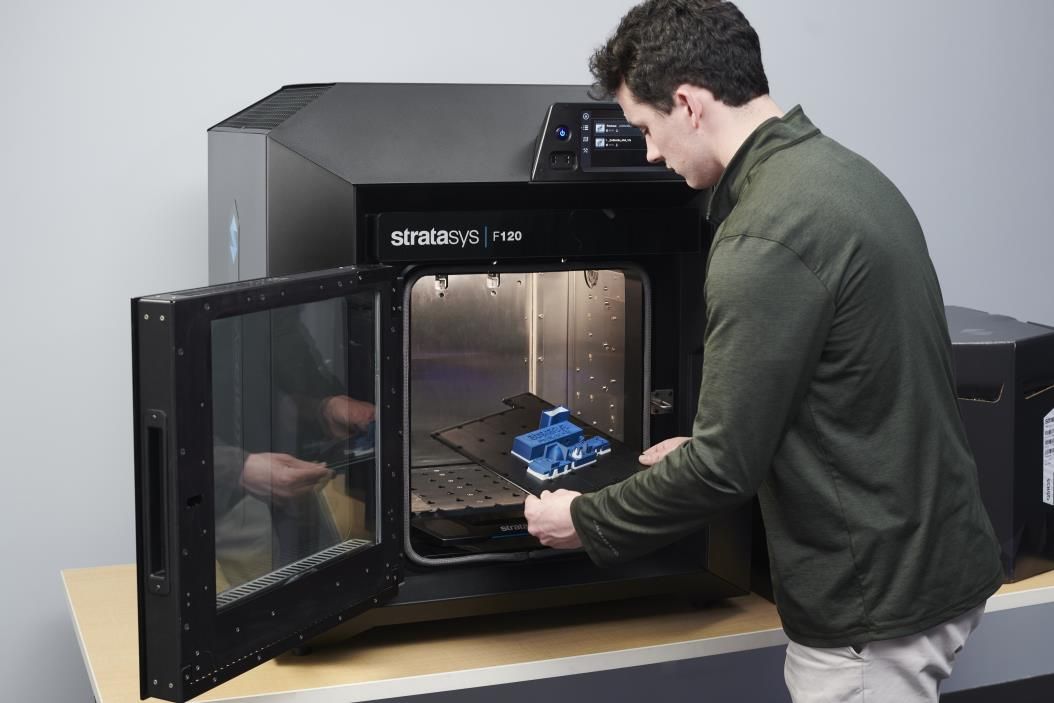


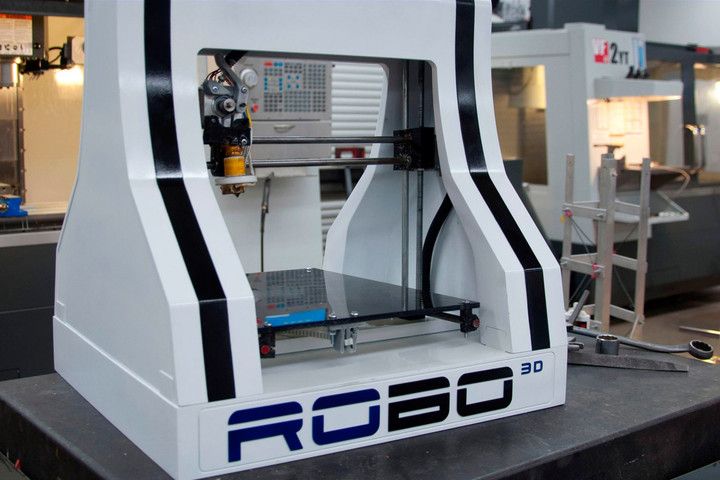 Prices may vary by region, over time and do not include additional products or services (taxes, shipping, accessories, training, installation, …).
Prices may vary by region, over time and do not include additional products or services (taxes, shipping, accessories, training, installation, …).


